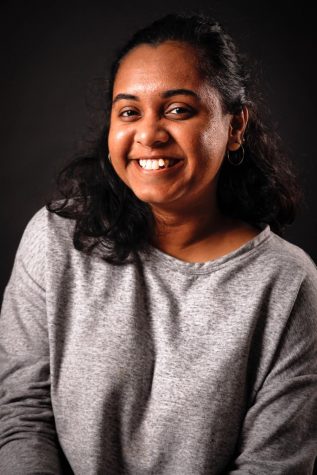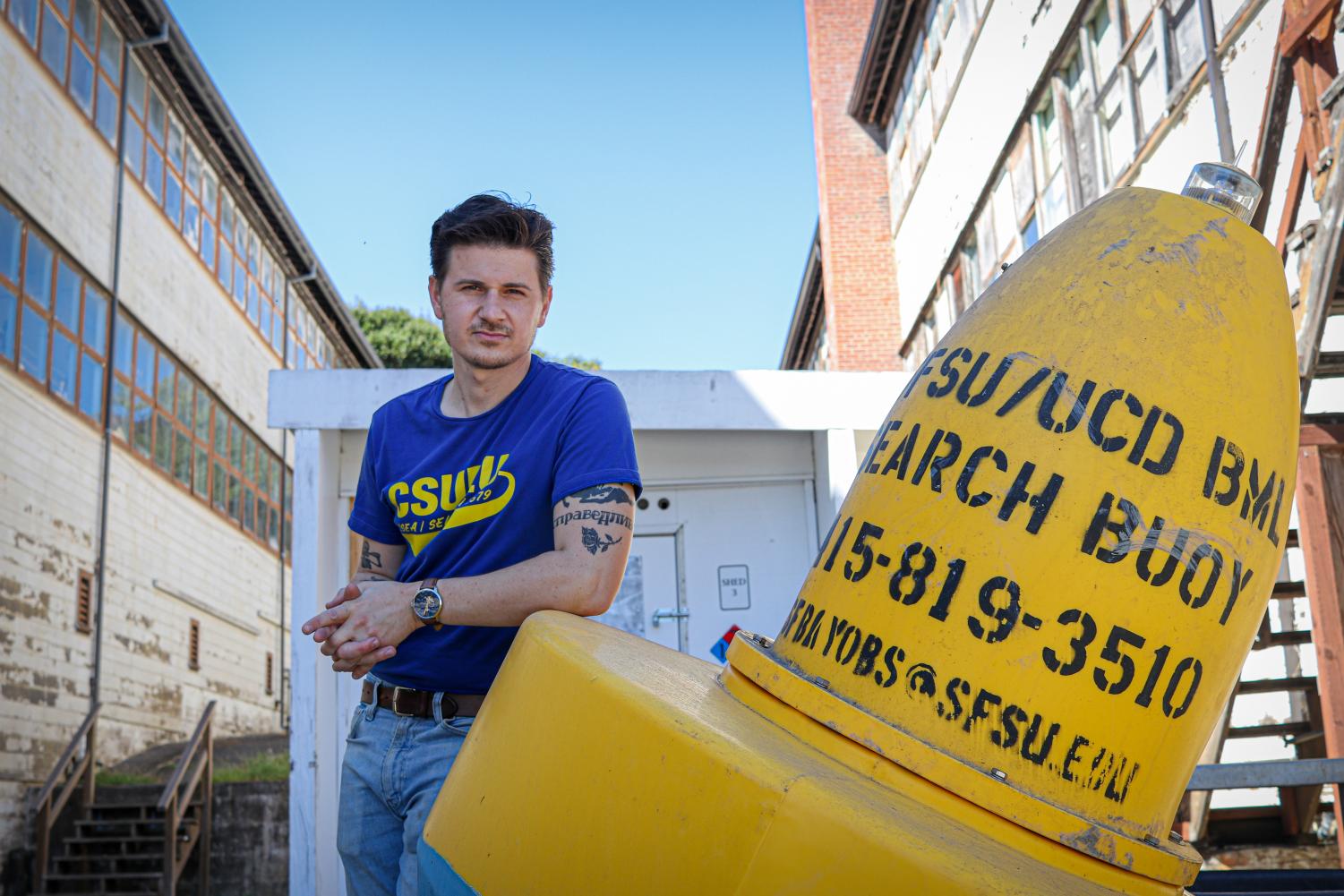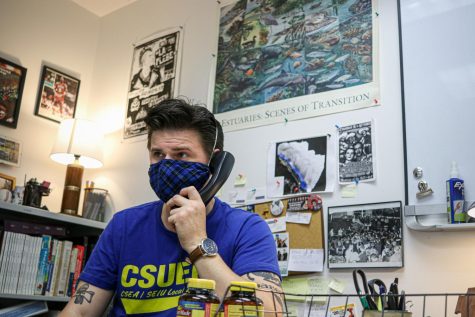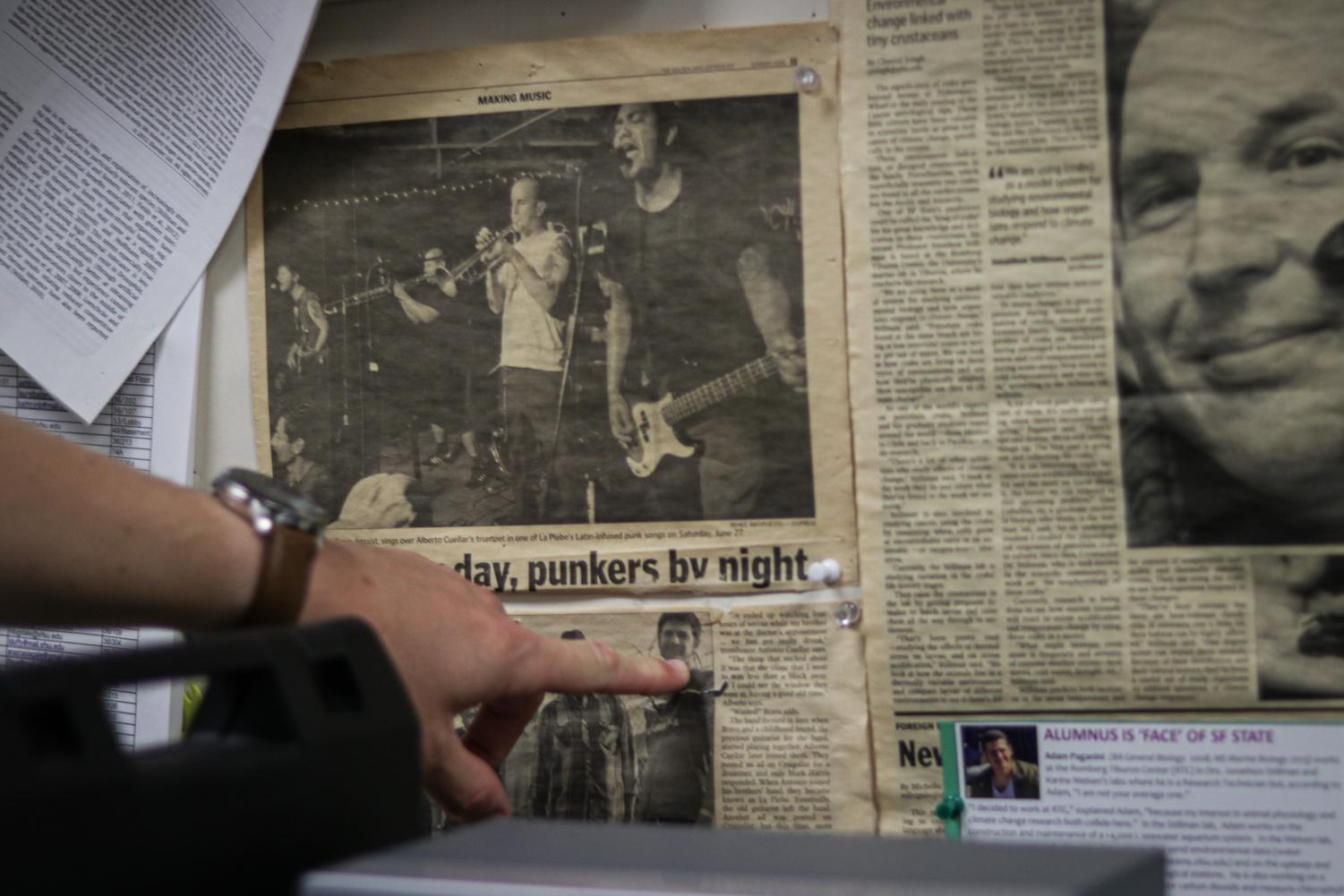



Oct 8, 2020
When Adam Paganini received his layoff notice, he was perplexed. As an SF State alum and coordinator at the school’s Estuary & Ocean Science Center, he thought that his grant-funded salary would keep him safe.
“How does that work?” he said. “I am not paid from the general fund. If I’m fired, the university saves no money.”
Paganini coordinates SF State’s RIPTIDES program, which was created by Dr. Karina Nielsen, professor of biology and director of the EOS Center. It was designed to provide Interdisciplinary Marine & Estuarine Science graduate students with in-the-field experience and job training.
RIPTIDES is the result of a $3 million grant from the National Science Foundation, awarded in 2016 to the grant’s principal investigators Nielsen, Dr. Jonathon Stillman, Dr. Tomoko Komada and Dr. Bill Cochlan of the EOS Center.
The recent revelation that 8% of SF State’s staff were facing layoffs sent waves through the campus community. Of the 131 SF State staff scheduled to be laid off by Nov. 9, 31 are funded by grants — not the university.
Since 2017, the program has operated on a dedicated campus off the coast of Tiburon, where students conduct research on local endangered species, coastal oceanography, oyster ecology and wave patterns, all done in the Bay Area.
“We used it to transform the way our master’s program in marine science operates,” he said.
The program’s goals include expediting students’ graduation, diversifying the student body, providing in the field experience and a $34,000 fellowship for master’s students in their second year.

Paganini’s layoff is rooted in the weeds of employment technicalities: grant-funded staff, regardless of how long they teach, must have their grant renewed periodically. As such, they are classified as temporary staff and would not have seniority over permanent staff who have a shorter tenure.
“I think that kind of just sends a poor message out there that, you know, a university, an organization like that could just let someone go with their loyalty and commitment that they had to the school and their students and wanting to better the education for their future students,” said Mehak Jain, a RIPTIDES trainee.
The school is citing the decrease in enrollment and resulting $41 million budget shortfall as the reason for the layoffs.
“Layoffs were the last moment before the budgetary cliff,” SF State President Lynn Mahoney said in a Sept. 10 interview with Xpress. “We were able through a really tremendous amount of work across campus to get our budget gap down from $41.1 million to $11.1 million.”
Budgetary concerns put the staff of grant-funded programs like RIPTIDES in jeopardy.
“Everyone in that program that’s a staff member received a layoff notice,” Paganini said. “But there’s a caveat: It’s just me. I’m the only staff member.”
To him, that means a decline in the quality of the program and, consequently, a “fundamental reduction in Student Services.”
“If he wasn’t there, it would – I don’t think the RIPTIDES program would have the diversity and the qualifications that a really good scientist would need,” Jain said. “Honestly, I would really just feel more comfortable with him being here, knowing that he was a big stepping stone in my process in getting into riptides, and I owe him that much.”
However, Paganini says there seems to be light at the end of the tunnel and remains optimistic.
“I still feel that there are ways to mitigate these layoffs — without really much cost to anyone — because of the infamous rainy day fund that the California State University has, he said”
In 2019, it was revealed through an audit that CSU had an undisclosed $1.5 billion surplus, which it claimed to be a reserve. CSU Chancellor Timothy White told the state auditor last year that one of the three reasons for the surplus is to pay operating costs “during times of economic and budget uncertainty.”
A meeting on Oct. 8 between the California State University Employees Union, President Mahoney and Provost Jennifer Summit could provide an opportunity for Paganini and others to bargain for the retention of some staff.
In the Sept. 10 interview, Mahoney said that a conversation about grant-funded positions and highly-skilled positions will take place, but did not say if that would happen at the Oct. 8 meeting.
“Why would you let go of all these people when you have budget reserves specifically tailored to mitigate the impact of an economic situation like this?” Paganini said. “Pandemic, mass unemployment, you got civil unrest in the United States during an election year where who knows what the next day will bring? […] I feel like this is definitely a rainy day.”
This upcoming meeting follows a staff-led protest held on campus on Sept. 12 in which staff members demanded CSU’s rainy day fund be used to save jobs.
In the meantime, the SFSU Worker Defense Coalition has opened a website for students and staff to submit stories, opinions and messages of support for those fighting to keep their jobs.
“I was an undergraduate at State, I was a master’s student at State, and now I’ve been an employee for seven years,” Paganini said. “I would like people to understand that SF State is the largest employer of SF State alum, so it doesn’t send the right message to our students — when there’s [131] staff laid off — that a lot of those staff are alum from SF State.”

Editor’s note: While Paganini is the coordinator of the RIPTIDES program, a previous version of this article stated that he was the founder; it was actually Dr. Karina Nielsen, professor of biology and director of the EOS Center, who founded RIPTIDES. It also previously stated that the NSF grant went to Paganini for his master’s thesis, but it was unrelated to the thesis and awarded to the grant’s principal investigators Dr. Jonathon Stillman, Dr. Karina Nielsen, Dr. Tomoko Komada, and Dr. Bill Cochlan of the EOS Center. The article has been edited to include these corrections.

